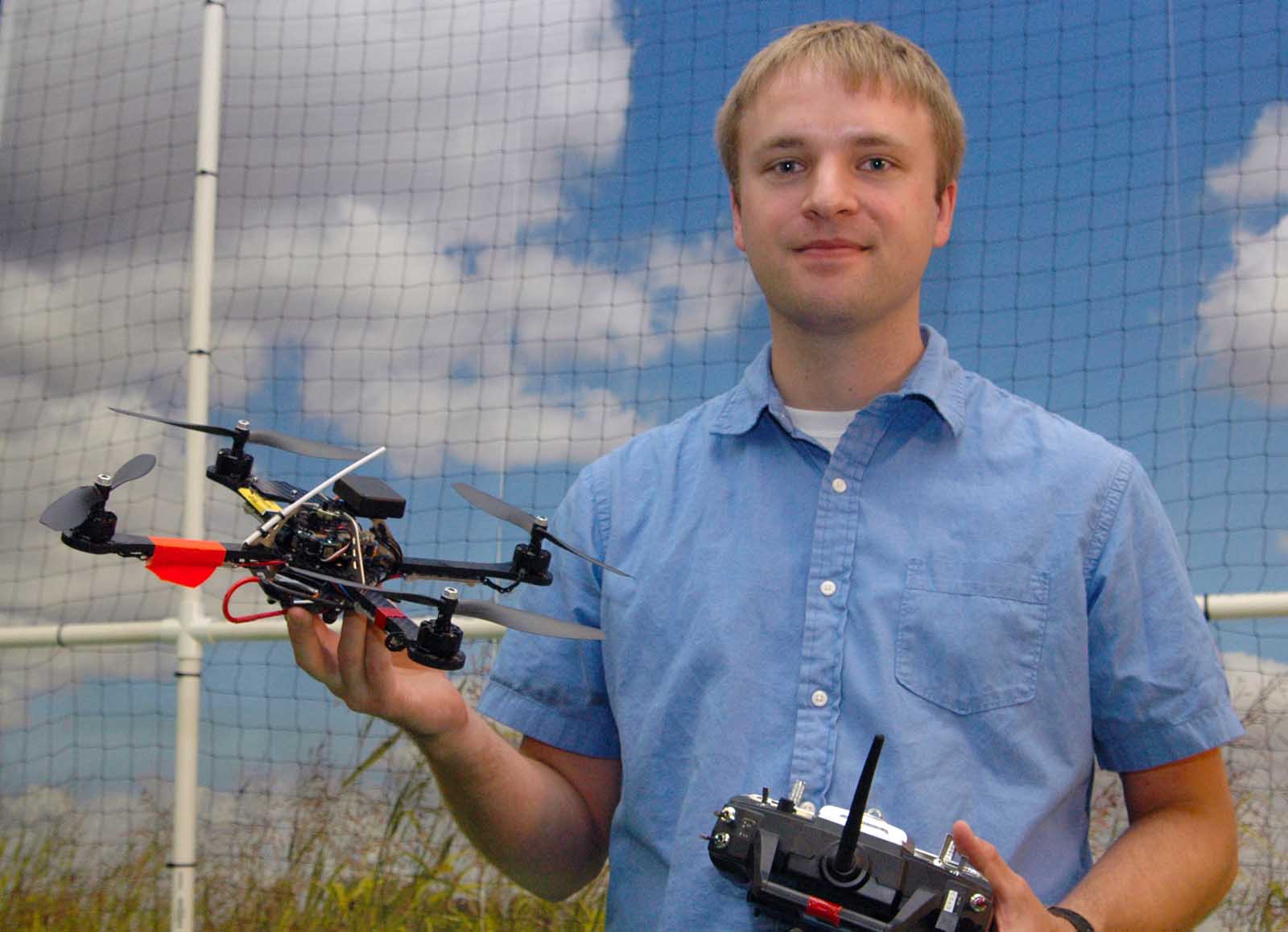
Carrick Detweiler's flying robots aren't quite ready to take over the world — yet. But they are carving out a niche on the dance floor.
Through an unconventional collaboration, the remote-controlled quadrotor robots used by the assistant professor of computer science and engineering will perform alongside the modern dance students of UNL's Susan Levine. The performance, free and open to the public, is at 6:30 p.m., today in the Lied Center for Performing Arts' Johnny Carson Theater. The performance precedes the 7:30 p.m. Pilobolus Dance Theatre program at the Lied Center.
Pilobolus is a contemporary dance company that started in 1971 at Dartmouth College. Performances feature a strong element of physical interaction between the bodies of the performers and contortions of the human form.
Detweiler's work on combining machines with dance started in his old lab at the Massachusetts Institute of Technology.
"This is a project that started basically as I was leaving MIT," said Detweiler, a second-year UNL faculty member. "We met with Pilobolus representatives about how we could integrate these high-tech choppers into the modern dance they do."
In the last year, Detweiler has worked with his former MIT lab group to develop the software and hardware capabilities needed to control the robots in the Pilobolus production. The result is "Seraph," a single act featured in the Pilobolus performance this evening. A short video featuring "Seraph" is at http://go.unl.edu/vpt.
"The experience really changed me as a scientist and opened me up to new ideas," said Detweiler. "We've been expecting robots in our lives for a long time. We're not quite there yet. But this is a great way to get robotics out in the open and show the public what is possible."
The robots in the dance numbers are flown remotely. Students from UNL's Nebraska Intelligent Mobile Unmanned Systems (NIMBUS) lab will control the quadrotor robots during the performance with Levine's students.
"The short workshop with students is designed to give you an idea of the moves you can do with dancers and these robots," said Detweiler. "The Pilobolus performance will show what you can do after working together for an extended period of time. They can do some quite amazing feats."
In the future, Detweiler hopes to continue to develop the robots, working toward more advanced versions that can actually interact and perform without humans at the controls.
"Right now, humans can do a better job at controlling these robots than computers can," said Detweiler. "In another five or 10 years, that will probably change and these robots will be autonomous and able to move with the dancers during performances."
For more information on the Pilobolus performance at the Lied Center, go to http://www.liedcenter.org.
— Troy Fedderson, University Communications